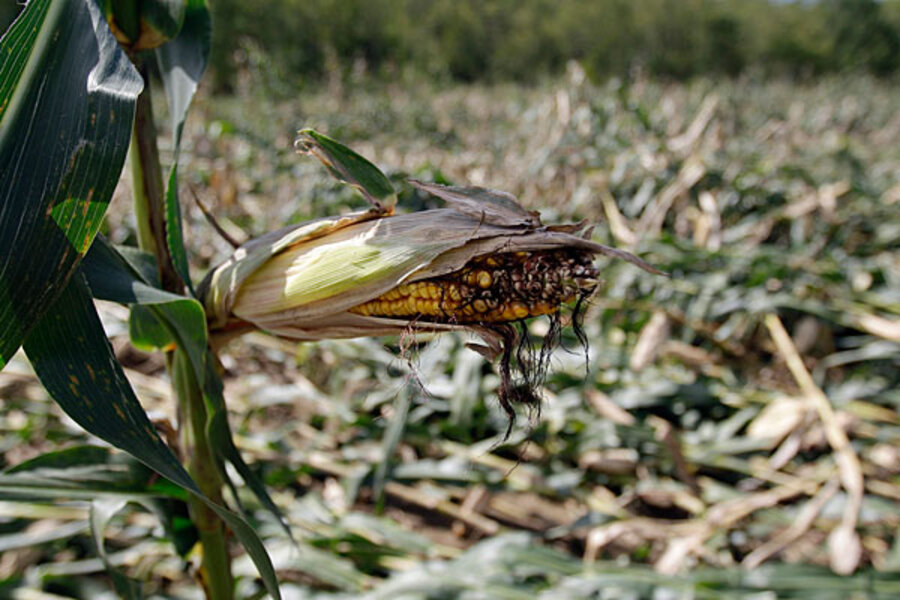Hurricane Irene adds to US farm woes. Will it raise food prices?
Loading...
| Atlanta
With much of the coastal mid-Atlantic and interior New England embarked on a massive cleanup effort from hurricane Irene, farmers are starting to take stock of crop damages that ranged from potentially catastrophic to "could have been worse."
Agriculture Secretary Tom Vilsack toured heavy-hit areas of eastern North Carolina Tuesday, where some farmers have reported total losses in their tobacco fields.
Some stranded dairy farmers in Vermont and New York reportedly have had to dump milk because tanker trucks couldn't make their rounds across broken bridges and roads, and farm-stand and feed corn throughout the region took a heavy hit.
Hudson Valley apples, meanwhile, suffered only an estimated 10 percent loss, the apples still young enough to cling tightly to branches.
"Crop-wise, this is a very tough time of year to have something like this happen," North Carolina Agriculture Commissioner Steve Troxler told reporters. "There are going to be some crops that are a total loss in some areas."
While the final tallies for crop losses could be weeks away, analysts say the storm's impact on food prices, if any, likely will pale compared to the effects of the extreme drought gripping parts of the South and West, including Texas, which has seen a record $5.2 billion crop loss this year.
Moreover, while damage to the corn crop was extensive in the mid-Atlantic and New England, the majority of corn and other food commodities consumed in the US comes from California and the Midwest, which has been largely unaffected by adverse weather this year. Hurricane Irene also didn't touch the nation's major crop ports, which are primarily on the Gulf and West Coasts.
"I think we're going to see some food inflation, but probably not as much because of hurricane Irene as other weather conditions that have affected price and production of corn, wheat, and soybeans," says Neil Harl, a farm economist at Iowa State University, in Ames.
So far, the full damage to North Carolina tobacco and soybean crops is unknown, though some reports say 90 percent of the leaf crop in eastern North Carolina may be lost or damaged. While most blueberry crops were out of the ground before the hurricane hit, continued soggy conditions could kill sensitive blueberry bushes and impact next year's crop. Blueberries from storm-struck states like New Jersey, the nation's second-largest blueberry producer, are shipped across the US.
One big question is the storm's impact on the dairy industry in Vermont and New York, where problems can affect national prices of a US kitchen-table staple: milk. The region was especially hard hit by raging floodwaters that tore apart roads and bridges and isolated entire communities. “This is a unique situation we are facing,” Dean Norton, a Genesee County, New York, dairy farmer, tells the Messenger Post newspaper in Canandaigua. Mr. Norton adds that regional food prices, including for milk, could rise because of the storm's impact on farms.
Following his aerial tour of hard-hit Tyrrell County, North Carolina, Tuesday, Agriculture Secretary Vilsack said the damage to crops was substantial. Such visits by top administration officials usually precede a presidential tour of a disaster area. "I've not seen the kind of flooding and damage to crops that I saw briefly today," Mr. Vilsack said. "And if this is representative of what North Carolina has suffered, it's a fairly significant blow."
Because of the way most food in the US is processed, only a small fraction of drought- and storm-related commodity price hikes will actually translate to higher prices in the grocery store aisle, says Professor Harl at Iowa State. Nevertheless, food inflation is slated to hit 4.5 percent this year, largely on rising global demand, according to the Consumer Price Index.





